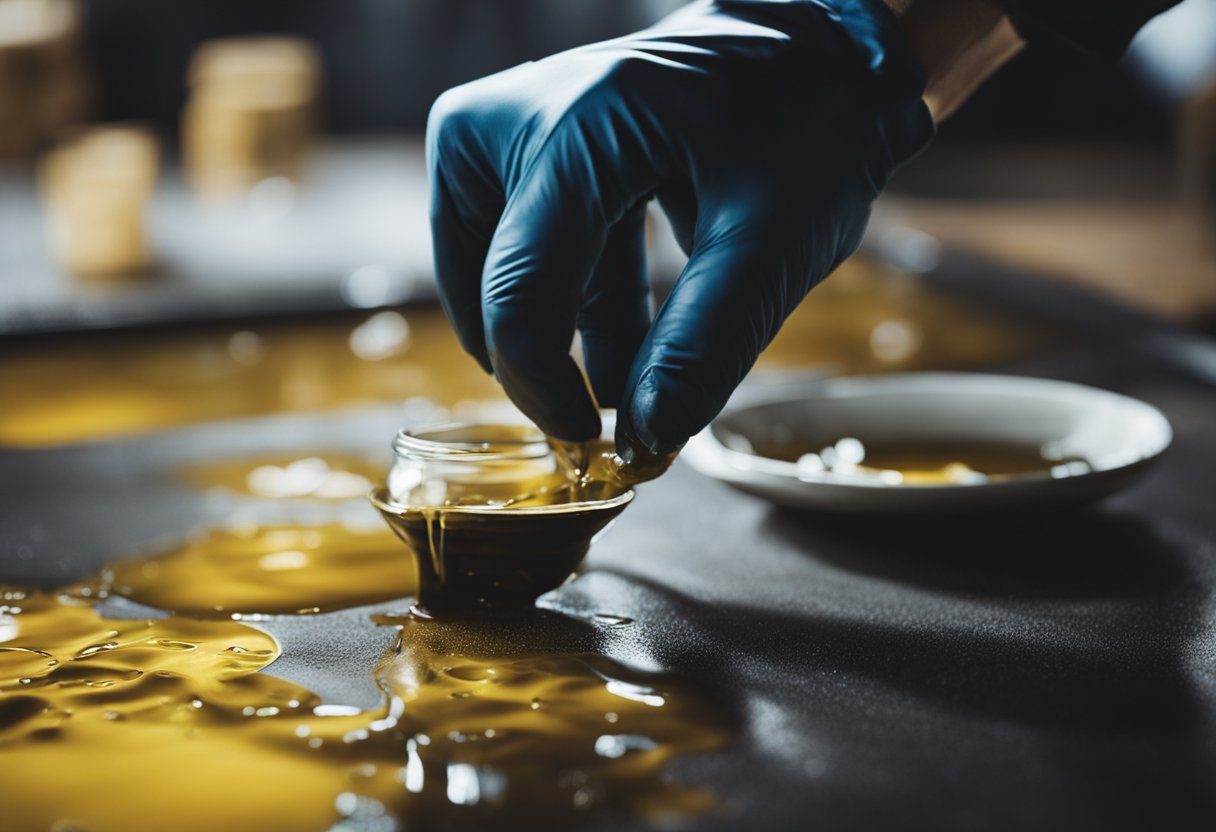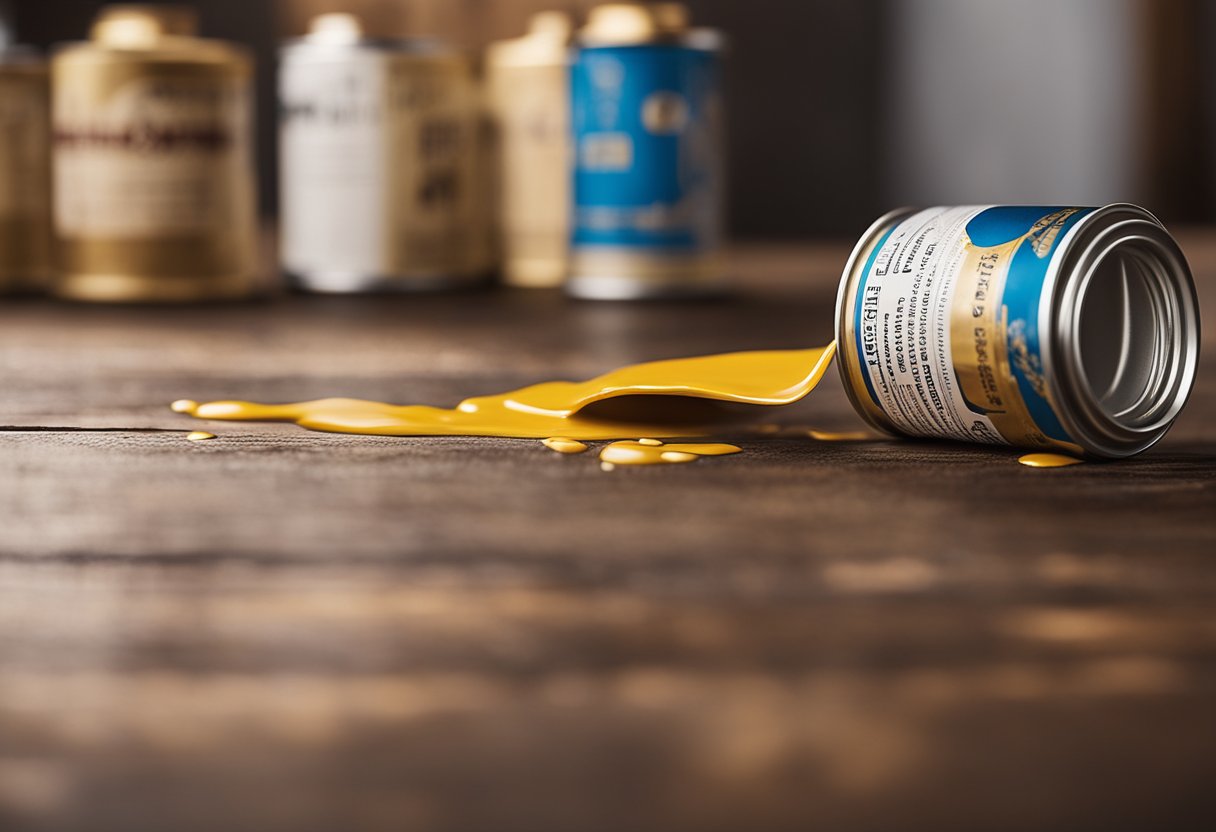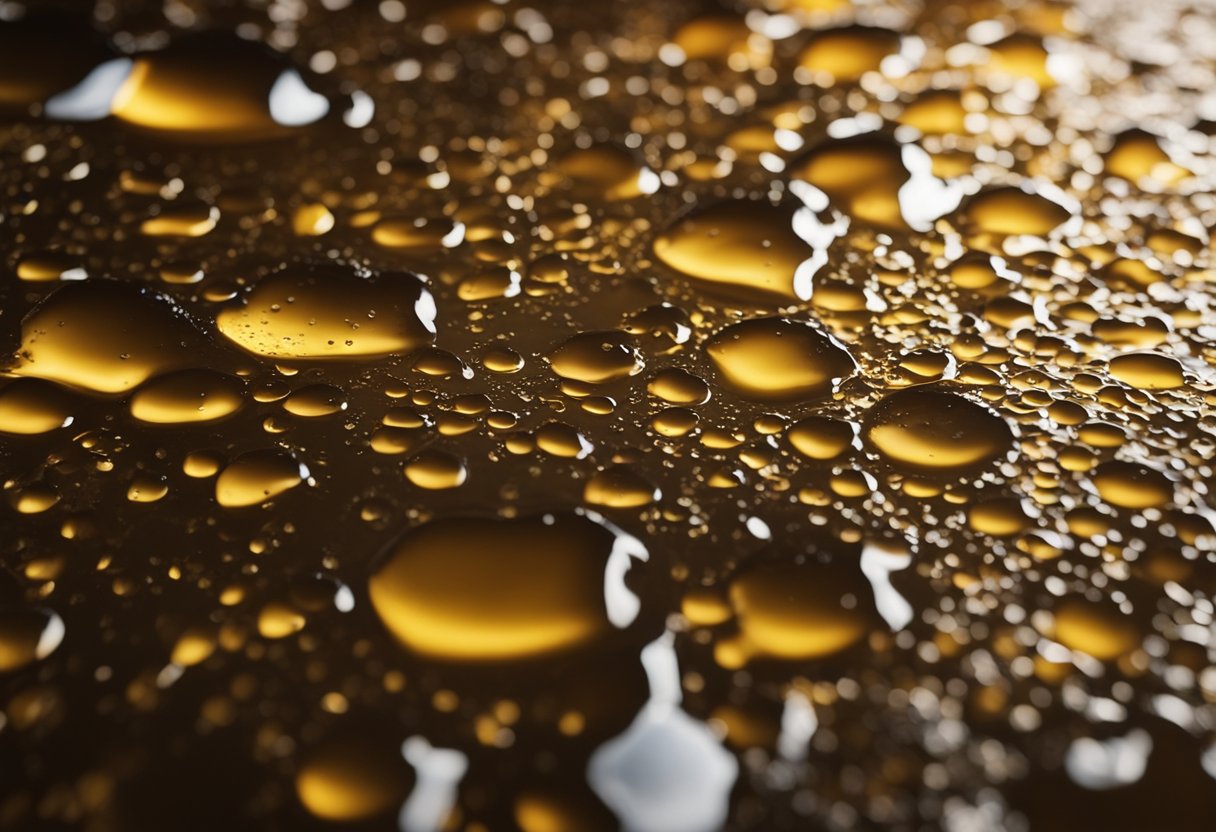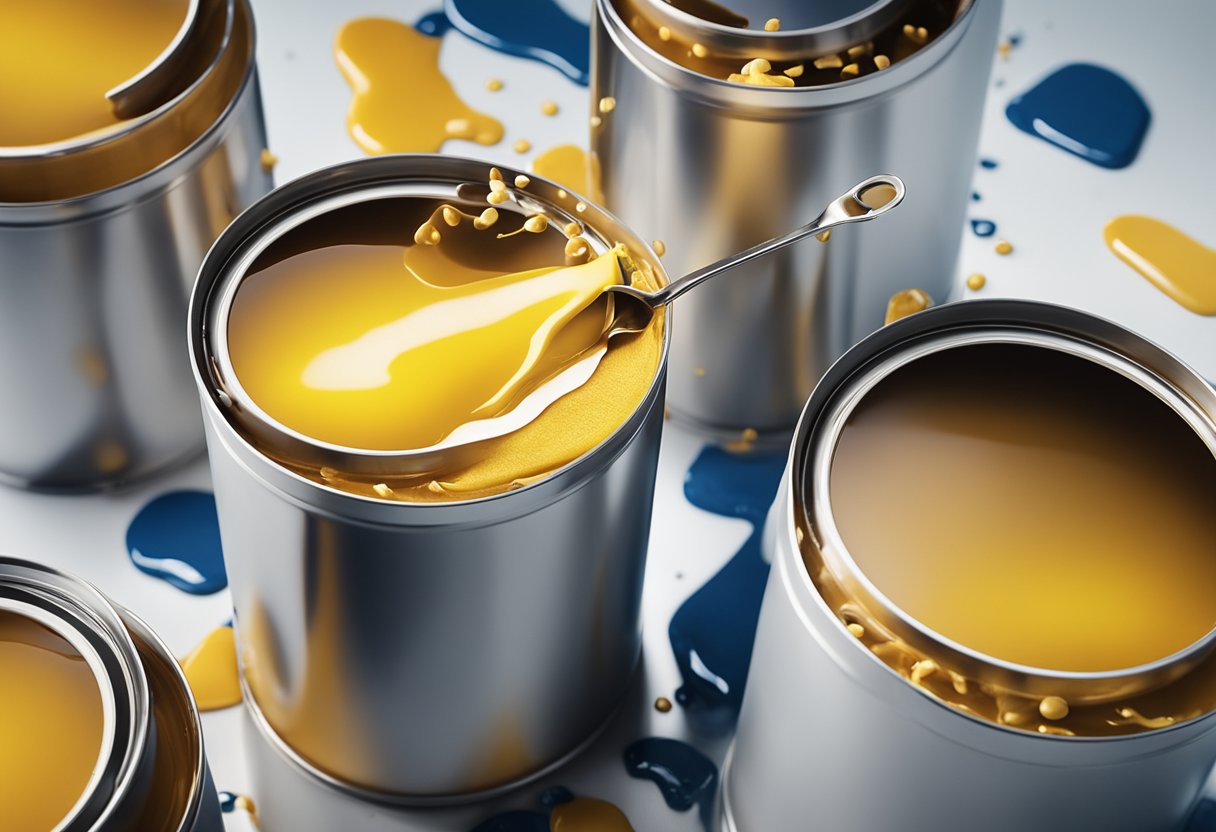I am often asked whether it is possible to apply latex stain over oil stain. The answer is yes, but it requires proper preparation and application techniques to achieve a long-lasting and durable finish. In this article, I will discuss the key factors to consider when applying latex stain over oil stain, the different types of surfaces you can use it on, common issues and solutions, and how to make an informed decision.
Understanding stains is crucial to achieving a successful finish. Oil-based stains penetrate deep into the wood, while latex stains remain on the surface. Applying latex stain over oil stain requires careful surface preparation to ensure adequate adhesion. Failure to prepare the surface correctly can lead to peeling, flaking, and other issues.
Surface preparation is key to achieving a long-lasting and durable finish. It involves cleaning and deglossing the surface, sanding it to create a smooth surface, and priming it to ensure adequate adhesion. Proper surface preparation ensures that the latex stain adheres to the surface and provides a durable finish.
Key Takeaways
- Applying latex stain over oil stain is possible with proper preparation and application techniques.
- Surface preparation is crucial to achieving a long-lasting and durable finish.
- Understanding the differences between oil-based and latex stains is essential to making an informed decision.
Understanding Stains
https://www.youtube.com/watch?v=yDKZFGvpYpw&embed=true
Stains are used to enhance the natural beauty of wood by adding color and highlighting the grain. There are two main types of stains: oil-based stains and water-based stains. Oil-based stains are made with mineral spirits or other petroleum distillates and dry by penetrating the wood and leaving behind a layer of pigment. Water-based stains are made with water and dry by evaporating, leaving behind a layer of pigment.
Oil-based stains are generally considered to be more durable and long-lasting than water-based stains. They are also better at highlighting the natural grain of the wood. However, oil-based stains take longer to dry and can be more difficult to clean up.
Latex stains are a type of water-based stain that contains a synthetic resin binder. They are easier to clean up than oil-based stains and dry faster. Latex stains are also more resistant to fading and cracking than oil-based stains.
When it comes to applying a latex stain over an oil-based stain, it is important to properly prepare the surface. This may involve cleaning, deglossing, and priming the surface before applying the latex stain. It is also important to make sure that the oil-based stain has fully dried and cured before applying the latex stain.
Overall, it is possible to apply a latex stain over an oil-based stain, but proper preparation is crucial to ensure a long-lasting and durable finish.
Surface Preparation
https://www.youtube.com/watch?v=nIJEMxNyqqo&embed=true
Before applying a latex stain over an oil-stained surface, it is crucial to prepare the surface properly. The surface preparation process ensures that the latex stain adheres correctly and provides a long-lasting finish.
First, clean the surface thoroughly using a detergent solution and a scrub brush. Rinse the surface with water and let it dry completely. This step removes dirt, grime, and any other contaminants that may prevent proper adhesion of the latex stain.
Next, remove any loose or peeling paint from the surface with sandpaper. Sanding the surface helps to create a rough texture that the latex stain can adhere to. Sanding also helps to remove any glossy or shiny areas that may prevent proper adhesion.
If the surface has mildew or mold, use a solution of bleach and water to kill the spores and remove the stains. Rinse the surface with water and let it dry completely. This step helps to prevent the growth of mold and mildew in the future.
After cleaning, sanding, and removing mildew or mold, the surface is ready for priming. Priming the surface helps to ensure proper adhesion of the latex stain and provides a smooth and even surface for the stain.
In conclusion, proper surface preparation is crucial when applying a latex stain over an oil-stained surface. Cleaning, sanding, removing mildew or mold, and priming the surface ensures proper adhesion of the latex stain and provides a long-lasting finish.
Application of Latex Stain Over Oil Stain
https://www.youtube.com/watch?v=_2GK6bwvi8o&embed=true
As a professional painter, I often receive questions about whether latex stain can be applied over oil stain. The answer is yes, but proper preparation is crucial for a long-lasting and durable finish. Here are some things to consider when applying latex stain over oil stain.
Preparation
Before applying the latex stain, the surface must be cleaned, deglossed, and primed. The oil stain must be thoroughly cleaned with a deglosser, and then sanded to remove any gloss. A primer should be applied to the surface to ensure proper adhesion of the latex stain.
Application Methods
Latex stain can be applied using a variety of methods, including brushing, rolling, spraying, and pad applicators. A nylon brush or sprayer should do the job well enough. When using a brush, it is recommended to use a high-quality brush to avoid brush marks. A roller can be used for larger surfaces, but be sure to use a high-quality roller cover to avoid lint and other debris. A pad applicator can also be used for a smooth and even finish.
Sprayer
When using a sprayer, an airless sprayer is recommended for best results. The sprayer should be set to a low pressure to avoid overspray and ensure an even application.
Brushing and Wiping
When brushing or wiping the latex stain over the oil stain, be sure to use a light touch to avoid disturbing the underlying oil stain. It is also recommended to work in small sections to ensure the stain is applied evenly and consistently.
In conclusion, applying latex stain over oil stain can be done, but proper preparation is crucial. The surface must be cleaned, deglossed, and primed before applying the latex stain. A variety of application methods can be used, including brushing, rolling, spraying, and pad applicators. By following these steps, you can achieve a long-lasting and durable finish.
Key Factors to Consider
When considering whether to apply latex stain over oil stain, there are several key factors to keep in mind.
Firstly, adhesion is crucial. Latex stains adhere to the surface of the wood, while oil stains penetrate the wood’s structure. To ensure proper adhesion, it is recommended to degloss the surface of the oil stain by lightly sanding it with fine-grit sandpaper (150-220 grit). This will help to remove the glossy sheen from the oil stain and allow the primer and new latex stain to adhere better.
Secondly, curing time is an important consideration. Latex stains have a shorter curing time than oil stains, which means they dry faster. This can be an advantage, as it allows for faster completion of the staining process. However, it also means that the stain may not penetrate the wood as deeply as an oil stain, which may affect its durability over time.
Moisture is also a key factor to consider. Latex stains are more vulnerable to moisture than oil stains, as they do not penetrate the wood as deeply. This can make them more susceptible to peeling or flaking over time, especially in areas with high moisture or humidity levels.
Another important factor to consider is sunlight. Direct sunlight can cause latex stains to fade or discolor over time, especially if they are exposed to sunlight for extended periods. If your wood surface is exposed to direct sunlight, it may be better to use an oil-based stain that is more resistant to fading and discoloration.
Finally, the type of stain you choose will depend on your desired outcome. If you want a semi-transparent or vibrant stain that allows the natural grain of the wood to show through, a latex stain may be the better choice. However, if you prefer a solid color or a more weathered look, an oil-based stain may be more suitable.
Overall, while it is possible to apply latex stain over oil stain, there are several key factors to consider before doing so. By keeping these factors in mind and choosing the right stain for your needs, you can ensure a durable, long-lasting finish that enhances the beauty of your wood surface.
Types of Surfaces
When it comes to staining surfaces, there are various types to consider, including siding, fences, and decks. Each surface has its unique characteristics that determine the type of stain to use. For instance, wood grain is an essential factor to consider when staining wood surfaces.
Siding is a crucial component of a house’s exterior, and it needs to be well-maintained to maintain its curb appeal. Staining siding can help protect it from weather elements and pests. Latex stain can be applied over oil stain, but proper preparation is essential to ensure a long-lasting and durable finish.
Fences are also essential components of a property’s exterior, and they require regular maintenance to keep them in good condition. Staining a fence can help protect it from weather elements, pests, and improve its appearance. Latex stain can be applied over oil stain, but proper preparation is crucial to ensure a long-lasting and durable finish.
Decks are outdoor living spaces that require regular maintenance to keep them in good condition. Staining a deck can help protect it from weather elements and pests, and improve its appearance. Latex stain can be applied over oil stain, but proper preparation is essential to ensure a long-lasting and durable finish.
In summary, when staining surfaces such as siding, fences, and decks, it is important to consider the surface type and characteristics. Latex stain can be applied over oil stain, but proper preparation is crucial to ensure a long-lasting and durable finish.
Maintaining Your Stained Surface
To ensure that your stained surface lasts long, proper maintenance is crucial. Here are some tips to help you maintain your stained surface:
-
Cleaning: Regular cleaning is essential to keep your stained surface looking fresh and new. Use a mild soap and water solution to clean the surface. Avoid using harsh chemicals as they can damage the finish.
-
Painting: If you want to change the color of your stained surface, you can paint over it. However, you need to ensure that the surface is clean and dry before you start painting. Use a high-quality house paint or clear sealer to get the best results.
-
Finishes: You can use a clear varnish or other finishes to protect your stained surface from damage. Make sure that the finish you choose is compatible with your current stain.
-
Avoid Lap Marks: When applying a second coat of stain, make sure that you avoid lap marks. Lap marks occur when you overlap wet and dry stain, leaving a visible line. To avoid lap marks, apply the second coat of stain in the same direction as the first coat.
By following these tips, you can ensure that your stained surface looks great for years to come. Remember to always read the manufacturer’s instructions before applying any cleaning or finishing products.
Common Issues and Solutions
https://www.youtube.com/watch?v=WEW4QWWwBPE&embed=true
When applying latex stain over oil stain, there are some common issues that can arise. Here are some of the most common issues and solutions that I have encountered:
1. Poor Adhesion
One of the most common issues when applying latex stain over oil stain is poor adhesion. This can happen because oil stains penetrate the wood’s structure, preventing latex stains from adhering properly. To solve this issue, you need to ensure that the surface is properly cleaned and deglossed before applying the latex stain. You can use a fine-grit sandpaper to smooth out the surface and create a more porous surface for the latex stain to adhere to.
2. Mildew
Mildew can also be a problem when applying latex stain over oil stain. This is because oil stains tend to attract mildew more than latex stains. To prevent mildew, you need to ensure that the surface is properly cleaned and dried before applying the latex stain. You can also add some mineral oil to the latex stain to help prevent mildew growth.
3. Smooth Finish
Another issue that can arise when applying latex stain over oil stain is achieving a smooth finish. This can happen because oil stains tend to be thicker and more pigmented than latex stains, which can result in an uneven finish. To solve this issue, you can use a natural bristle brush to apply the latex stain in thin, even coats. You can also add some binders to the latex stain to help it adhere better to the surface and create a smoother finish.
Overall, while it is possible to apply latex stain over oil stain, you need to take certain precautions to ensure that the finish is smooth and long-lasting. By properly cleaning and deglossing the surface, preventing mildew growth, and using the right tools and additives, you can achieve a beautiful, durable finish that will last for years to come.
Making an Informed Decision
https://www.youtube.com/watch?v=SwT4On6Uotk&embed=true
When it comes to staining wood surfaces, choosing the right type of stain is critical to achieving the desired results. If you’re wondering whether you can put latex stain over oil stain, the answer is yes, but there are some important factors to consider before proceeding.
Preparation is Key
One of the most important things to keep in mind when staining wood is that preparation is key. Before applying any type of stain, it’s essential to clean and prepare the surface properly. This involves removing any dirt, grime, or old paint or stain that may be present, as well as sanding the surface to create a smooth, even base for the new stain.
Factors to Consider
There are several factors to consider when deciding whether to use latex stain over oil stain. First and foremost, you’ll want to think about the type of wood you’re working with. Some types of wood are more receptive to certain types of stain than others, so it’s important to do your research and choose the right type of stain for your particular wood species.
Another important factor to consider is the age and condition of the existing oil stain. If the oil stain is old and worn, it may not provide a good base for the new latex stain, and may need to be removed entirely before applying the new stain.
Preparing the Wood
To prepare the wood for the new latex stain, you’ll need to clean and sand the surface thoroughly. This will help to remove any old stain or paint, as well as smooth out any rough spots or imperfections in the wood. Once the surface is clean and smooth, you can apply a coat of primer to help the new stain adhere properly.
Coats of Stain
When applying the new latex stain, it’s important to apply thin, even coats to ensure a smooth, consistent finish. Depending on the type of wood and the desired color, you may need to apply several coats of stain to achieve the desired results.
Latex Paint
Latex stain is a popular choice for many wood surfaces because it is easy to apply, dries quickly, and is available in a wide range of colors. However, it is important to choose a high-quality latex stain that is specifically designed for use on wood surfaces, as this will ensure a durable, long-lasting finish.
Durability
One of the main benefits of using latex stain over oil stain is that it tends to be more durable and long-lasting. This is because latex stain is designed to penetrate the wood fibers more deeply, which helps to protect the wood from moisture, UV rays, and other environmental factors that can cause damage over time.
Informed Decision
Ultimately, the decision to use latex stain over oil stain will depend on a variety of factors, including the type of wood, the condition of the existing stain, and your personal preference for color and finish. By taking the time to research and prepare properly, you can make an informed decision that will help you achieve the best possible results for your wood staining project.
Frequently Asked Questions
Can you apply water-based stain over oil-based stain on wood?
Yes, you can apply water-based stain over oil-based stain on wood as long as you follow the proper preparation steps. First, clean the surface of the wood thoroughly with a mild detergent and water. Rinse the surface with clean water and allow it to dry completely. Sand the surface with fine-grit sandpaper to remove any glossy finish and prepare it for the water-based stain. Apply a coat of water-based primer and let it dry completely before applying the water-based stain.
Is it possible to apply latex stain over an oil-based stain?
Yes, it is possible to apply latex stain over an oil-based stain as long as you follow the proper preparation steps. First, clean the surface of the wood thoroughly with a mild detergent and water. Rinse the surface with clean water and allow it to dry completely. Sand the surface with fine-grit sandpaper to remove any glossy finish and prepare it for the latex stain. Apply a coat of latex primer and let it dry completely before applying the latex stain.
What are the differences between latex stain and oil-based stain?
Latex stain and oil-based stain have different properties and characteristics. Latex stain is water-based and dries faster than oil-based stain. It is also easier to clean up with soap and water. Oil-based stain is more durable and provides better protection against moisture and UV rays. It also penetrates deeper into the wood and enhances its natural grain and texture.
Can you apply latex paint over oil-based stain?
Yes, you can apply latex paint over oil-based stain as long as you follow the proper preparation steps. First, clean the surface of the wood thoroughly with a mild detergent and water. Rinse the surface with clean water and allow it to dry completely. Sand the surface with fine-grit sandpaper to remove any glossy finish and prepare it for the latex paint. Apply a coat of latex primer and let it dry completely before applying the latex paint.
What happens if you paint latex over oil-based stain on a deck?
If you paint latex over oil-based stain on a deck without proper preparation, the paint may not adhere properly and may peel or flake off over time. It is important to clean the surface of the deck thoroughly with a mild detergent and water, rinse it with clean water, and let it dry completely before painting. Sand the surface with fine-grit sandpaper to remove any glossy finish and prepare it for the latex paint. Apply a coat of latex primer and let it dry completely before applying the latex paint.
Is it recommended to apply water over oil-based stain?
No, it is not recommended to apply water over oil-based stain as it may cause the stain to lift or peel off. Water can also cause the wood to swell and warp, which can damage its structure and appearance. It is important to use the proper type of stain and follow the proper preparation steps to ensure a durable and long-lasting finish.

Hi, I’m Sal Muller of Tooltrip.com. My DIY experience led me to understand essential power tools for home projects. Tooltrip.com guides enthusiasts and professionals in choosing right tools for any job. I provide concise top tool reviews for easier, efficient DIY.






